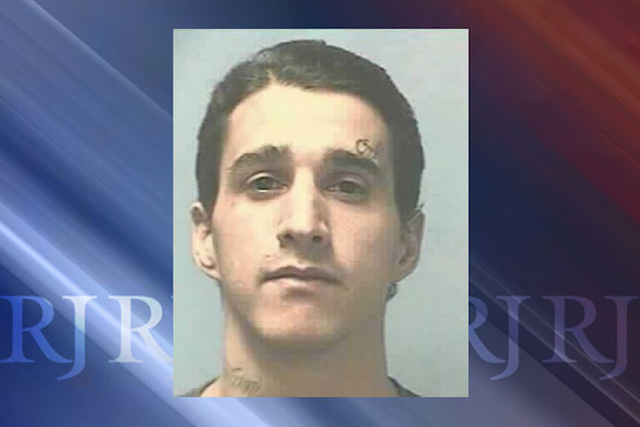Nevada correctional officers blamed in High Desert prison death

CARSON CITY — Newly released documents blame correctional officers at a Nevada prison for the death of one inmate and wounding of another more than a year ago.
The internal reports were recently unsealed by a judge overseeing a federal civil rights lawsuit following the November 2014 shooting at High Desert State Prison near Indian Springs.
The Employee Misconduct Adjudication Reports specified six allegations against Correctional Officer Jeff Castro for neglect of duty, insubordination, unauthorized use of force, false statements and unbecoming conduct that brought the Corrections Department “negative media attention.”
Correctional Officer Isaiah Smith was written up for three allegations of neglect of duty and false statements for failing to report repeated, prior security breaches “which led to an inmate’s death.”
Carolos Perez, 28, died Nov. 12, 2014, from multiple gunshot wounds. Another inmate, Andrew Arevalo, now 25, was wounded. Both men were handcuffed behind their backs when they were shot in a shower hallway in a segregation unit known as “the hole.” High Desert is about 40 miles northwest of Las Vegas, just south of Indian Springs.
Another correctional officer who arrived after the shooting stopped said there were “vast amounts of blood everywhere on the tier.” Another officer, identified only as Senior Correctional Officer Mumpower, evaluated the inmates who were both handcuffed and lying on the ground, according to an incident report.
Mumpower determined Perez needed immediate medical attention. He placed Perez “on his left side as he heard him gurgling on his own blood and this would allow for it to drain out,” the report said.
Prison medical staff took Perez to a trauma room and administered CPR and other treatment for about 45 minutes before he was declared deceased, the report said.
Prison officials acknowledged Perez’s death when it happened but didn’t provide details. That he was shot by staff didn’t become known until four months later when the Clark County coroner reported the cause of death and ruled it a homicide.
Two civil lawsuits, one filed by Perez’s family, the other by Arevalo, are pending.
The latest documents were contained as exhibits in a motion by the attorney general’s office seeking dismissal or summary judgment of the case filed by Las Vegas attorney Cal Potter on behalf of Victor Perez.
Besides the officers, the lawsuits name the state, former Corrections Department Director Greg Cox, the warden and other administrators as defendants. A state board in March approved hiring private lawyers to represent the three correctional officers for up to $45,000 each.
Cox resigned in the fall at the insistence of Gov. Brian Sandoval.
Castro, Smith and the trainee who fired the four shotgun blasts, Reynaldo-John Ramos, were put on leave immediately after the incident. Ramos, who was on probation, was terminated. Castro and Smith resigned May 1, 2015.
The attorney general’s office sought to keep the internal reports secret, arguing they are personnel records not subject to disclosure.
But U.S. District Judge Andrew P. Gordon, in an April 4 order, denied the state’s motion.
“Those reports concern the state’s investigation of the events that give rise to this litigation,” Gordon wrote. “The public has an interest in seeing that the state properly and thoroughly investigates allegations of serious wrongdoing.”
At the time of the shooting, both Perez and Arevalo were in a segregation unit known as “the hole,” where regulations require that inmates be moved one at a time and “all escorts of retrained inmates are hands on.”
Castro, according to the documents, admitted he often failed to comply with the regulation, telling an investigator, “Pitch and catch, that’s the norm at HDSP.” The description refers to allowing inmates to walk unescorted from one correctional officer to another.
The report said Castro failed to directly escort Arevalo from the shower to his cell, and also allowed Perez out of the shower without a hands-on escort while Arevalo was in the hallway. The two inmates got into a fight, and Castro failed to intervene, instead leaving the area to find a pair of gloves.
“The use of the shotgun would not have been required had … Castro followed policy and had he not had two inmates out of the cells at the same time,” the report said, adding that had he broken up the fight “the other officer would not have used the shotgun to quell the fight.”
Smith was also cited for failing to intervene in the fight. The report said Smith had witnessed Castro moving multiple inmates out of the cells at the same time but failed to report the security breaches.
Arevalo was shot in the face but survived. He is serving up to six years on a Clark County burglary conviction. After the incident he was transferred from High Desert to Ely State Prison, Nevada’s only maximum security penitentiary where inmates under a life term or death sentence are housed.
His lawyer, Alexis Plunkett, said Arevalo has been in isolation since May 2014, and his term is scheduled to expire in August.
The attorney general’s office has been investigating the case for a year for potential criminal charges. A spokeswoman on Monday said the office had no comment on the court filings.
Contact Sandra Chereb at schereb@reviewjournal.com or 775-461-3821. Find @SandraChereb on Twitter.
RELATED
State’s silence on shooting of handcuffed prison inmates called deeply troubling
Family of dead High Desert inmate negotiates with Nevada AG
Lawsuit: High Desert prison guards allowed inmates to fight
Nevada to pay lawyers defending workers in deadly prison shooting












